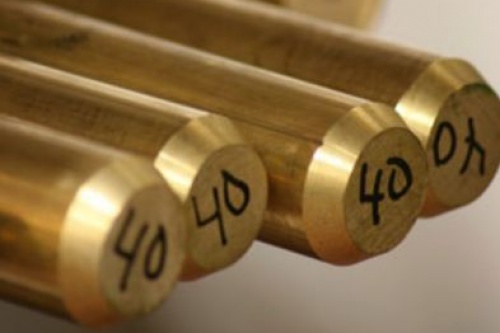Aluminium bronze is a type of bronze alloy that is composed primarily of copper and aluminium. It is known for its excellent strength, corrosion resistance, and high thermal and electrical conductivity. The composition of an aluminium bronze round bar typically includes.
various elements in specific proportions to achieve desired properties.
Copper (Cu):
Copper is the primary element in aluminium bronze, typically constituting around 90-96% of the alloy composition.
It provides the base metal for the alloy and contributes to its overall strength and electrical conductivity.
The high copper content imparts the characteristic reddish-brown colour to the alloy.
Aluminium (Al):
Aluminium is the primary alloying element in aluminium bronze, usually comprising 5-11% of the composition.
It provides significant strength and corrosion resistance to the alloy, making it suitable for various applications.
Aluminium also enhances the alloy's heat resistance and improves its mechanical properties.
Nickel (Ni):
Nickel is commonly added to aluminium bronze, typically ranging from 1-5% in the composition.
It improves the overall strength and toughness of the alloy, enhancing its resistance to wear, fatigue, and impact.
Nickel also contributes to the alloy's resistance to corrosion, particularly in seawater and other harsh environments.
Iron (Fe):
Iron is present in aluminium bronze in trace amounts, usually less than 1%.
It acts as a stabilising element and helps improve the alloy's mechanical properties.
Iron can also enhance the alloy's resistance to stress corrosion cracking and increase its wear resistance.
Manganese (Mn):
Manganese is added in small quantities, typically less than 1%, to improve the castability and fluidity of the alloy during the manufacturing process.
It can also enhance the alloy's strength and hardness, as well as its resistance to wear and corrosion.
Silicon (Si):
Silicon is another trace element in aluminium bronze, usually present in quantities less than 1%.
It improves the alloy's fluidity during casting and helps reduce the formation of porosity.
Silicon can also contribute to increased strength and hardness of the alloy.
Other Elements:
In addition to the main elements mentioned above, aluminium bronze may contain other elements in minor amounts to achieve specific properties or meet certain requirements.
These elements can include zinc (Zn), tin (Sn), lead (Pb), chromium (Cr), and others.
The inclusion of these elements in the alloy composition depends on the desired application and the specific alloy grade.
Aluminium Bronze Round Bar Manufacturers In India
Rajkrupa Metal Industries is one of the leading Aluminium Bronze Round Bar Manufacturer in India. In the Aluminium Bronze Round Bar sector, we have established ourselves as one of the top brands. With its extensive corporate and technical people skills, Rajkrupa Metal Industries has strategically positioned itself as a top-tier producer and retailer in the global Aluminium Bronze Round Bar market.
We sell a wide range of Aluminium Bronze Round Bar in a variety of sizes and shapes to a variety of locations. We have been identified as one of India's leading Aluminium Bronze Round Bar manufacturers due to our ability to satisfy high demand for Aluminium Bronze Round Bar Suppliers while also producing high-quality Aluminium Bronze Round Bar goods.
We also provide Inconel 625 Round Bars Manufacturer in India and C63000 Round Bar Manufacturer in India
In conclusion, aluminium bronze round bars are primarily composed of copper and aluminium, with copper being the dominant element. The addition of aluminium, nickel, iron, manganese, silicon, and other trace elements contributes to the alloy's mechanical strength, corrosion resistance, and other desirable properties. The specific composition may vary depending on the intended application, and different alloy grades are available to meet various industry requirements.












